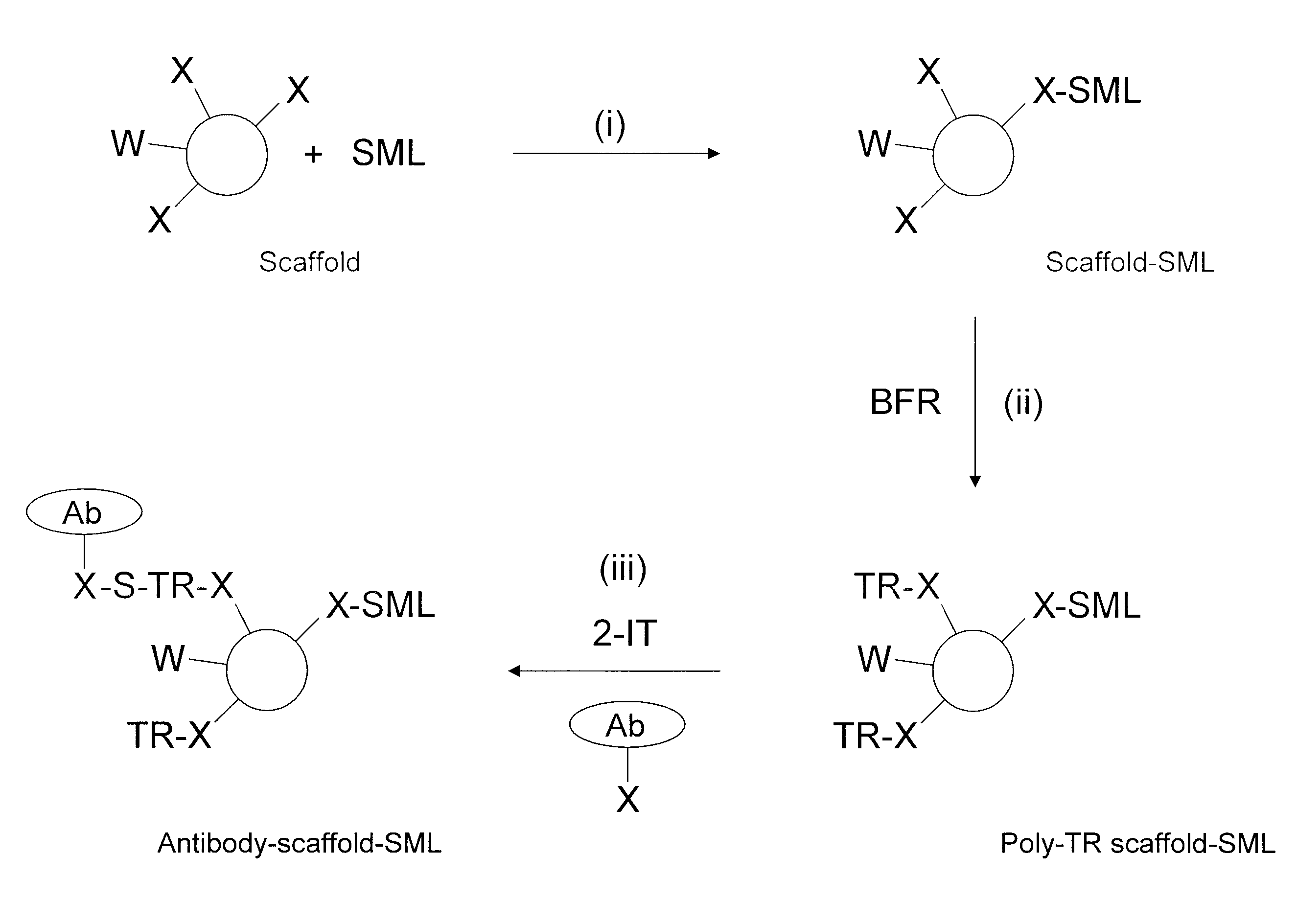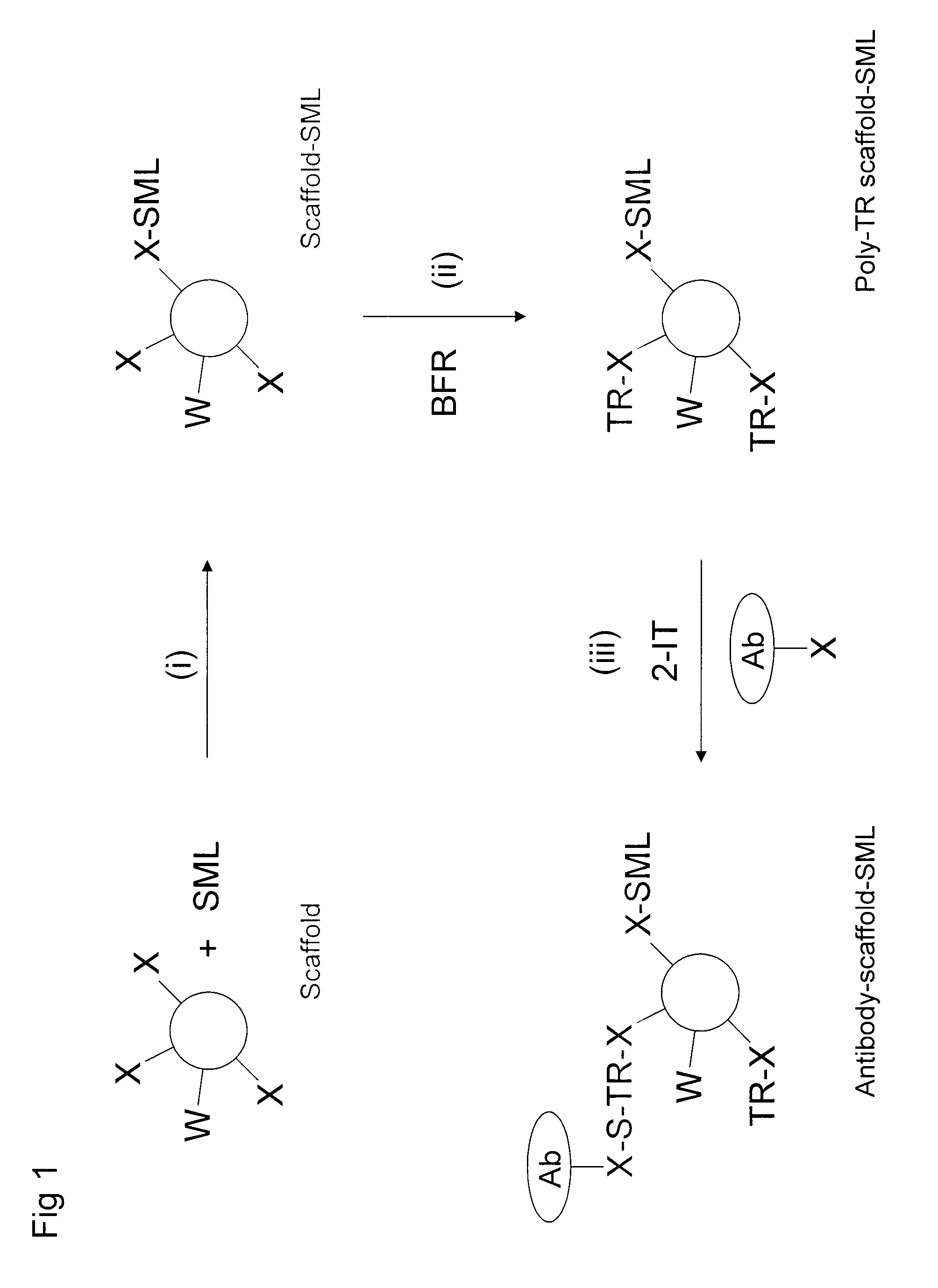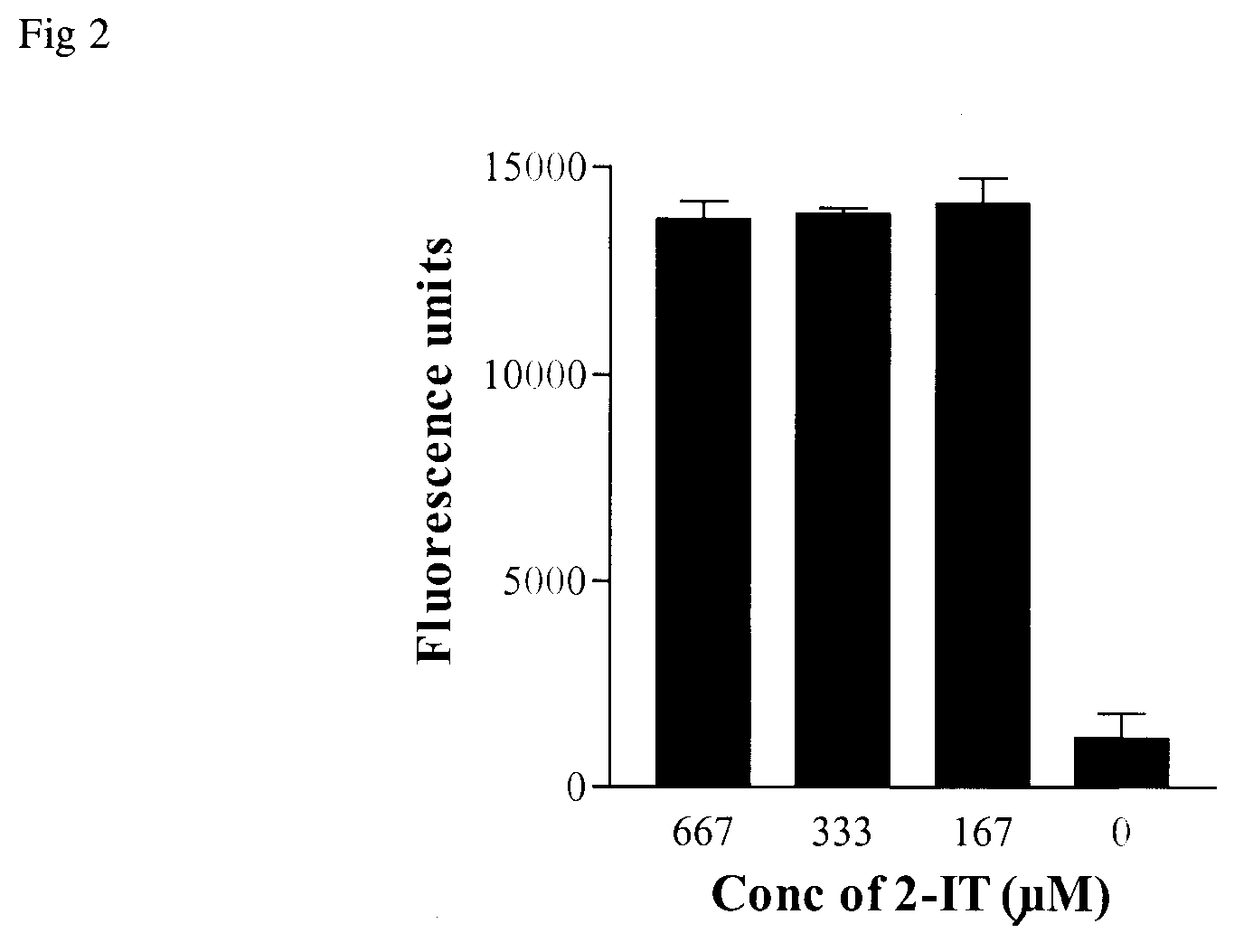Production of conjugates
a conjugate and conjugate technology, applied in the field of conjugate production, can solve the problems of reduced selectivity for thiols, the subject of reactive groups, etc., and achieve the effects of reducing the fluorescence of fluoresceinylated dextran scaffolds, halting further thiolation, and high smcc modification
- Summary
- Abstract
- Description
- Claims
- Application Information
AI Technical Summary
Benefits of technology
Problems solved by technology
Method used
Image
Examples
example 1
Preparation of Poly-Maleimido-Fluoresceinylated-OVA
[0073]Ovalbumin (OVA) (A5505; lot 076K7045) at 40 mg / ml (approx 0.87 mM; 1 ml) in 100 mM sodium phosphate pH 7.2 was reacted with a limiting amount (with respect to ovalbumin amines; 20 lysines per molecule, 16 of which are normally accessible; Battra P P, Int J Biochem. 23, 1375-84, 1991) of 100 μl of 22.5 mM 5-(and 6-)carboxyfluorescein succinimidyl ester (Molecular Probes C1311; lot 25547W) dissolved in DMSO. After 30 minutes at 25° C. in the dark a further addition of 50 μl of sulfo-succinimidy1-4-(N-maleimidomethyl)cyclohexane-1-carboxylate (sSMCC) was made from 200 mM stock in DMSO to give final concentrations of sSMCC and ovalbumin of 8.7 mM and approx 0.76 mM respectively. After a further 30 minutes of incubation in the dark the sample of poly-maleimido-fluoresceinylated-OVA was desalted on Sephadex G-25 (PD10 columns; GE Healthcare) into 10 mM sodium phosphate pH 5.8. A 125 μl aliquot was diluted with 775 μl of sodium phosp...
example 2
Preparation of Coated Plates
[0074]96-well Maxisorp plates (Nunc) were coated with 50 μl / well of purified IgGs (20 μg / ml) or streptavidin (5 μg / ml) for at least 16 hours at 4° C. Before use, coated plates were washed 5 times with 50 mM Tris / 150 mM NaCl, pH 8.0 (TBS) and blocked for 30-60 min with 0.1% BSA in TBS (blocker). Blocked plates were washed 5 times with TBS prior to incubation with conjugates diluted, as required, in blocker.
example 3
Conjugation of Goat Anti-Rabbit IgG with Poly-Maleimido-Fluoresceinylated-Ovalbumin
[0075]50 μl of goat anti-rabbit IgG (1 mg / ml) in 200 mM Hepes / 1 mM EDTA, pH 7.5, was mixed with 5 μl 10 mg / ml poly-maleimido-fluoresceinylated-OVA (after resuspension of the material from Example 1 in 25 μl of water). Four 11 μl portions of the mixture were incubated with 1 μl of 2-iminothiolane (varying concentrations: 8 mM, 4 mM, 2 mM and 0 μmM) giving final concentrations of 667 μM, 333 μM, 167 μM and 0 μM. After incubation overnight at 25° C., the samples were diluted 1 / 100 in 50 mM Tris / 150 mM NaCl / 0.1% BSA (blocker) and incubated for 1 hour at 25° C. on a 96-well Maxisorp microtitre plate coated with rabbit IgG (Example 2). After washing 5× with TBS, 100 μl of TBS was added to each well prior to reading (1 sec per well) on a Wallac Victor using excitation / emission settings of 485 / 535 nm and CW lamp energy setting of 11720.
[0076]The data are shown in FIG. 2. As can be seen, the lowest concentrati...
PUM
| Property | Measurement | Unit |
|---|---|---|
| pH | aaaaa | aaaaa |
| pH | aaaaa | aaaaa |
| pH | aaaaa | aaaaa |
Abstract
Description
Claims
Application Information
 Login to View More
Login to View More - R&D
- Intellectual Property
- Life Sciences
- Materials
- Tech Scout
- Unparalleled Data Quality
- Higher Quality Content
- 60% Fewer Hallucinations
Browse by: Latest US Patents, China's latest patents, Technical Efficacy Thesaurus, Application Domain, Technology Topic, Popular Technical Reports.
© 2025 PatSnap. All rights reserved.Legal|Privacy policy|Modern Slavery Act Transparency Statement|Sitemap|About US| Contact US: help@patsnap.com



